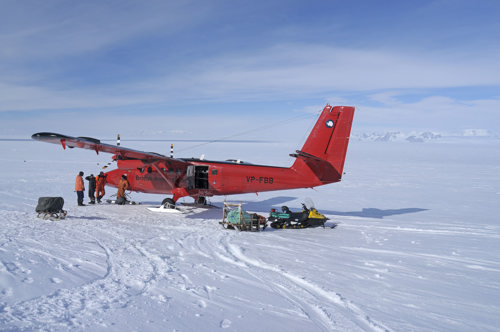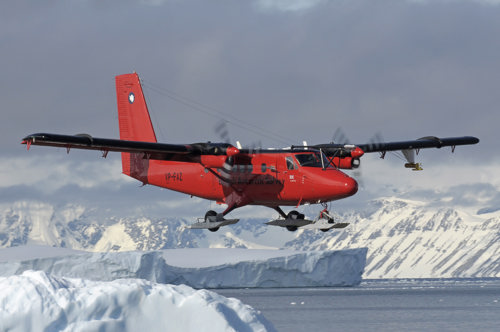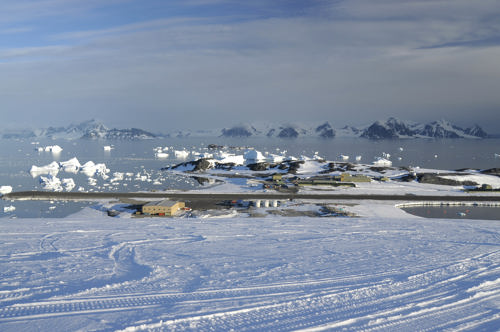Meet the Fleet: British Antarctic Survey
- 13th Mar 2024
Based in Cambridge, the British Antarctic Survey (BAS) is the UK’s national polar research institute, delivering multi-disciplinary scientific research to help unlock the secrets of Earth’s polar regions.
After unveiling their participation at this year’s Royal International Air Tattoo last month, we are excited to say you will be able to get a closer look at one of BAS’ Twin Otter aircraft at RAF Fairford in July.

Twin Otter 'Bravo 'Bravo' makes a refuelling stop at the BAS logistics base at Fossil Bluff on Alexander Island.
But before they join us this year, we are going to explore how BAS go about the work they do, with insight from those who help make it possible.
Antarctica represents one of the most extreme natural environments on the planet. After first being discovered in January 1820, it took 163 years until Antartica was mapped accurately. No humans have ever inhabited it on a permanent basis, but the British Antarctic Survey, who has a mission statement of ‘Polar Science for a Sustainable Planet’, has had a presence on the remote continent for the last 80 years.

Twin Otter 'Alpha Zulu' lands back at Rothera following an atmospheric research flight over Marguerite Bay.
BAS operates three research stations in Antarctica as well as two on the island of South Georgia and the UK Arctic Research Station at Ny-Alesund on Svalbard.
BAS carries out extensive research to better understand the earth’s climate and ecosystems and aviation plays a pivotal role, explains BAS’ Air Unit Operations Coordinator, Dan Beeden.
“BAS operates one research ship, the RRS Sir David Attenborough, as well as five aircraft including four de Havilland Canada Twin Otters and a de Havilland Canada DHC-7, more commonly known as the Dash 7,” he said.
“The Dash 7 operates regular ‘airbridge’ services between Punta Arenas, Chile and Rothera Research Station carrying personnel and equipment. The aircraft also shuttles supplies between Rothera and BAS’s logistics base at Sky Blu where it lands on a blue ice runway.

Dash 7 landing on the blue ice runway at Sky Blu.
“Of the four Twin Otters, two are specially equipped to carry out scientific research; ‘Alpha Zulu’ being the atmospheric research aircraft which will be at RIAT this summer and ‘Bravo Lima’ being the geophysical science aircraft.”
Operating in such challenging conditions presents unique obstacles; for example, after landing at a field camp to refuel from cached fuel drums, crews may need to dig out those drums from beneath metres of accumulated snow.
The Twin Otters, which have a striking paint scheme, can be fitted with a wide range of sensors, instruments, probes and radars. However, another crucial and slightly less technical piece of equipment they’re supplied with are skis that allow them to operate efficiently on both the gravel runway at Rothera and snow and ice runways across the continent.
Outside deployment, the aircraft are based in Canada, but ferry south via Central and South America at the start of each Antarctic season in early October, before heading north again between February and April.

An overview of BAS' Rothera station with Pourquoi-Pas island and the Arrowsmith Peninsula in the distance.